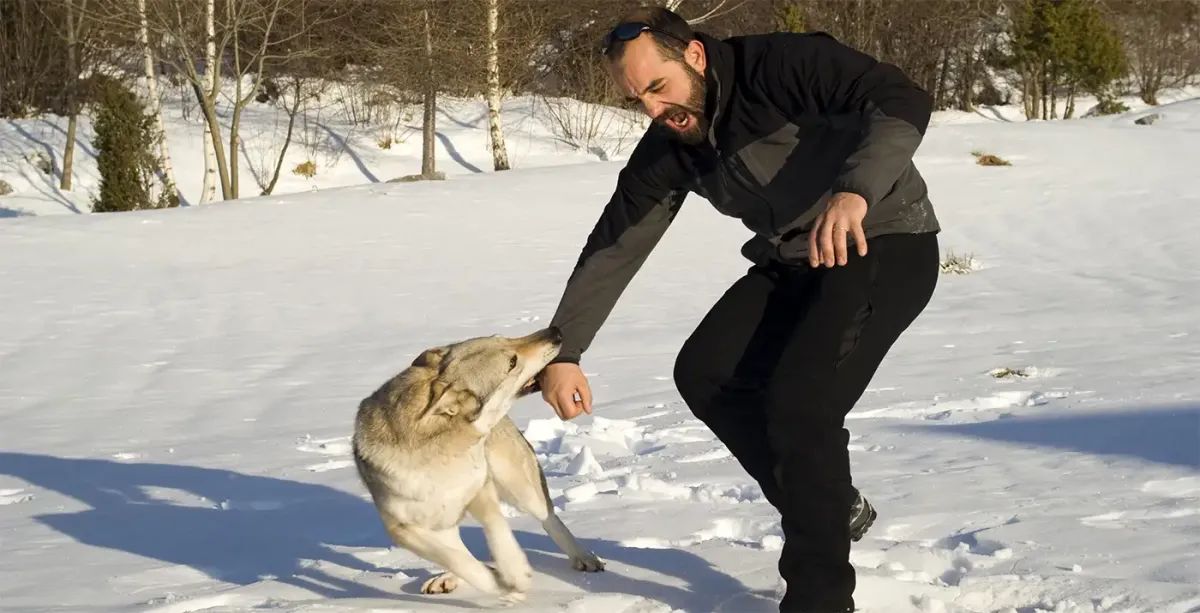Dog Bite Prevention Week 2016

Dog bite prevention week takes place on the third week of May annually and aims to educate people in how to avoid being bitten by a dog. It's a sad fact that dog bites, in the UK, increase more and more each year. Over the past 10 years, dog bites have increased by over 40%. The latest NHS figures appear to show that there has been an increase of over 6% on 2014 compared to 2013*.
Thousands of people in the UK are bitten by dogs every year, and many of these bites result in the need for medical treatment and admission to hospital. Children between the age of 0 and 9 years are the most likely to be bitten, with the injuries being on the face and shoulders. Their bites often occur whilst the child is playing with a " familiar" dog too.
Bark Busters believe that the vast majority of dog bites or attacks can be avoided. To minimise the risk, dog owners should take care to train and socialise their dog and feed a good quality diet. They should also educate children in the appropriate way to behave around dogs. Below are some guidelines on child safety in the presence of dogs:
- NEVER leave children alone with a dog.
- Educate your child about dog safety just as you would about road safety. To get you started, you could ask your child to watch our "Dally Says" video with an important message.
- Don’t allow your child to approach a strange dog. If the owner is present, you may ask the owner if it is ok for your child to approach the dog. Only then, and under the guidance of the owner , you may supervise your child in a gentle approach to the dog. Allow the dog time to sniff you first before any attempt to stroke the dog. You should only stroke the dog if the owner is confident that it's ok to do so. Unless you supervise this greeting, children often rush up to dogs whilst asking the owner if they can stroke the dog, but are often reaching out to the dog before the owner has registered the question.
- Never allow a child to approach a dog whilst it is eating or sleeping, and don’t allow children to feed a dog as dogs can be protective of food. Furthermore, don’t allow a dog to take food out of a child’s hands.
- Never allow a child to approach a dog with puppies. She will be very protective over the puppies, and may bite if she feels that her puppies are at risk.
- Don’t allow children to approach a dog who is tied up. If a dog is frightened or scared it has two options, fight or flight. If they are tied up, they have lost the option to flight and may bite if they feel threatened and can’t escape.
- Children should never be allowed to run around or scream around dogs. This can excite the dog and can lead to heavy play or may alarm a dog and can lead to a bite.
- It goes without saying that children should never be allowed to pull a dog’s ears, mouth or tail etc. Dogs feel pain, children can be heavy-handed and although they don’t mean to, can cause pain which may result in a bite. Children should never sit or lie on a dog. Even hugging a dog should be discouraged.
- Ensure that your dog has somewhere to go where he can escape the attention of a child. A crate can provide a place of safety or a quiet area under a table. Children should never approach the dog in his crate or area of safety, and should certainly never try to enter the crate.
- Whenever you have children over to visit, make sure that your dog is under control on their arrival, giving you time to explain your rules about approaching your dog. Be vigilant and be ready to remove your dog from a situation where you are uncomfortable, or where your dog appears uncomfortable. This may mean that you need to learn to observe your dog’s body language . We have resources to help you with this on our website.
Recent Articles
- Easter Holidays - Keeping our dogs safe around food
- Horticultural Horrors for Hounds
- Understanding Dog Body Language
- Heatstroke in dogs - know the signs and what to do
- Preventing Separation Anxiety When Returning To Work
- Separation Anxiety
- Managing your time at home with your dog
- Top 10 Indoor Games for your Dog
- Working from home with your dog
- COVID-19 Social Distancing and Self Isolation
